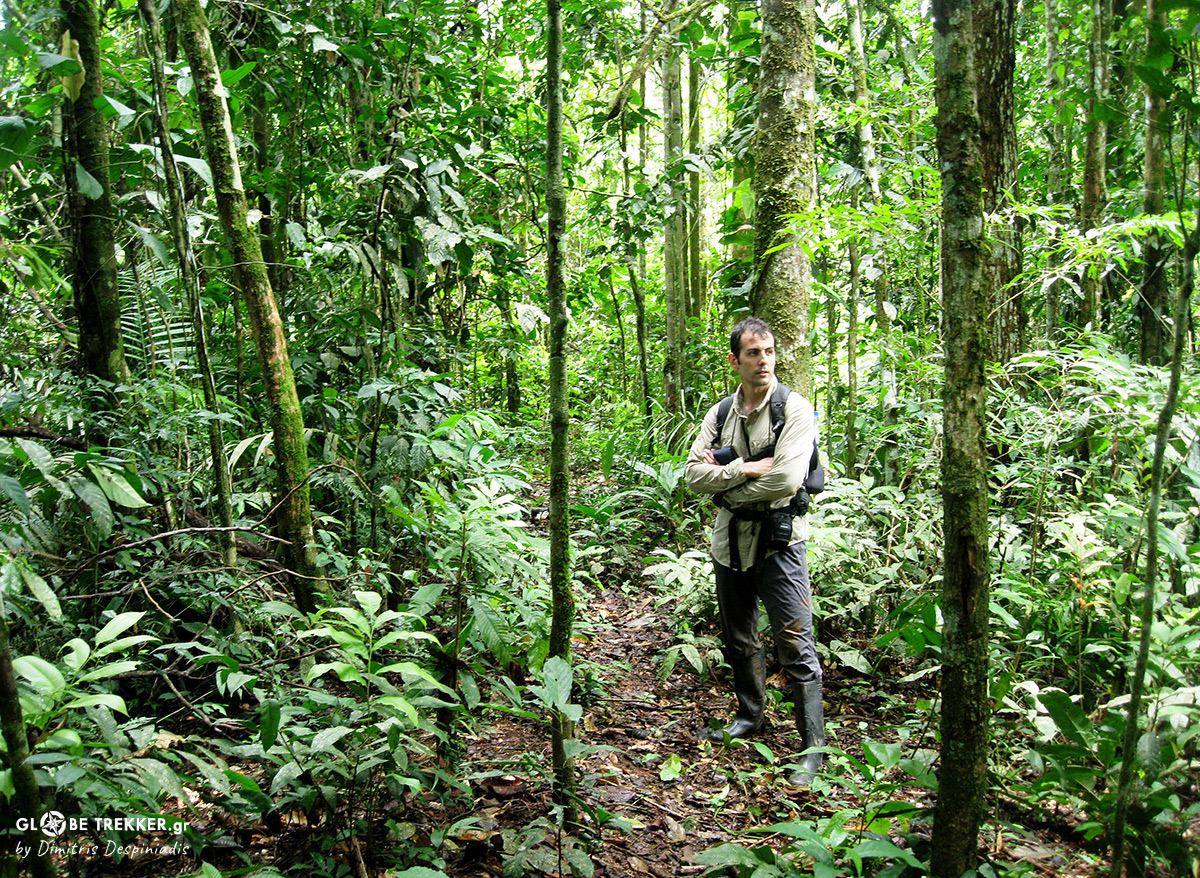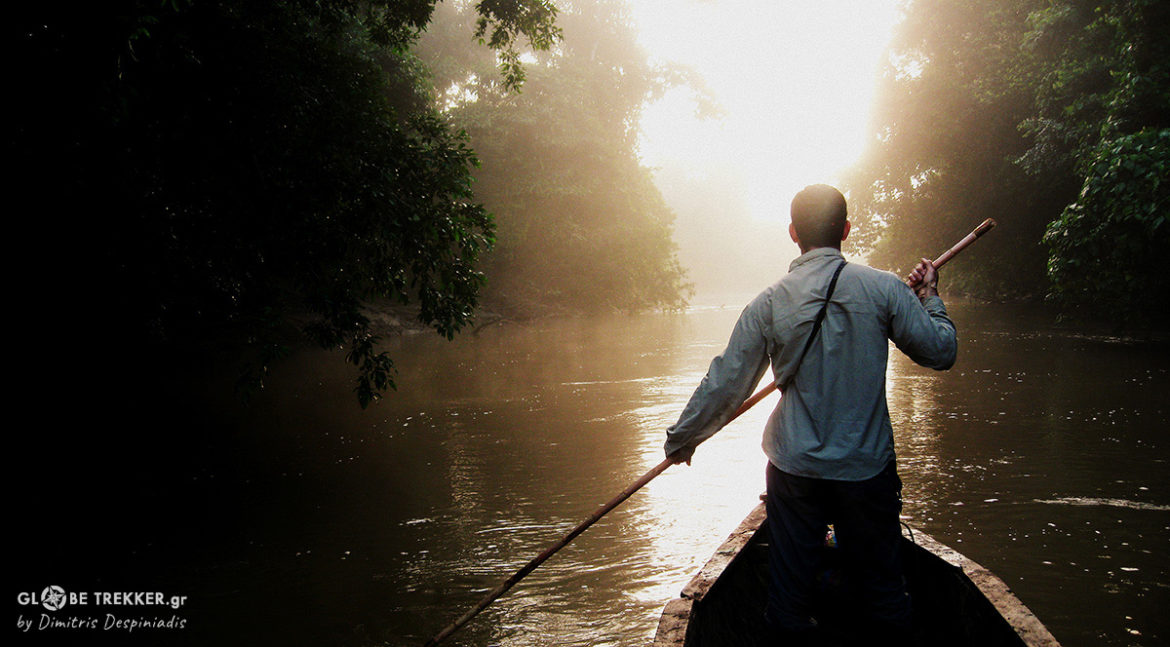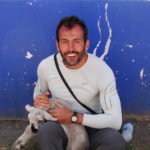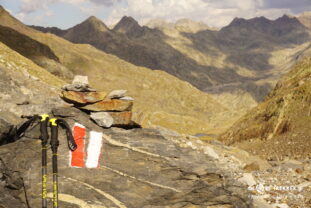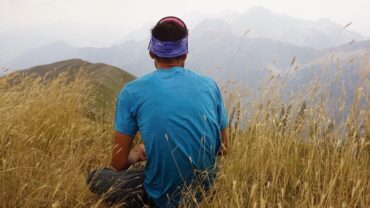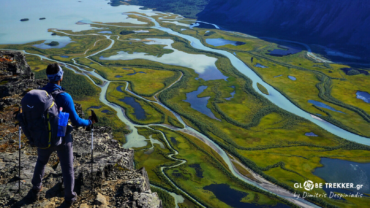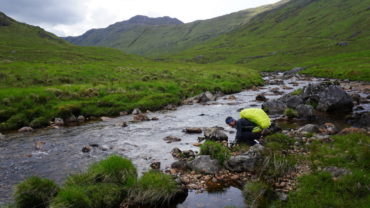Huaorani: The Sons of The Great Forest
A strange mixture of scents, fragrance and rottenness, filled the humid – almost suffocating – atmosphere. Hours had passed since we began following the barefoot man with the machete. The man was walking in such an ease on the -full of thorns and dead branches – muddy earth. For a moment he stopped ! Weird sounds were coming from every possible direction.The one-eyed Gava took a breath, did not pay too much attention and kept cutting in two the seemingly impenetrable vegetation of the great forest that stumped our way.
We were shadows within shadows.
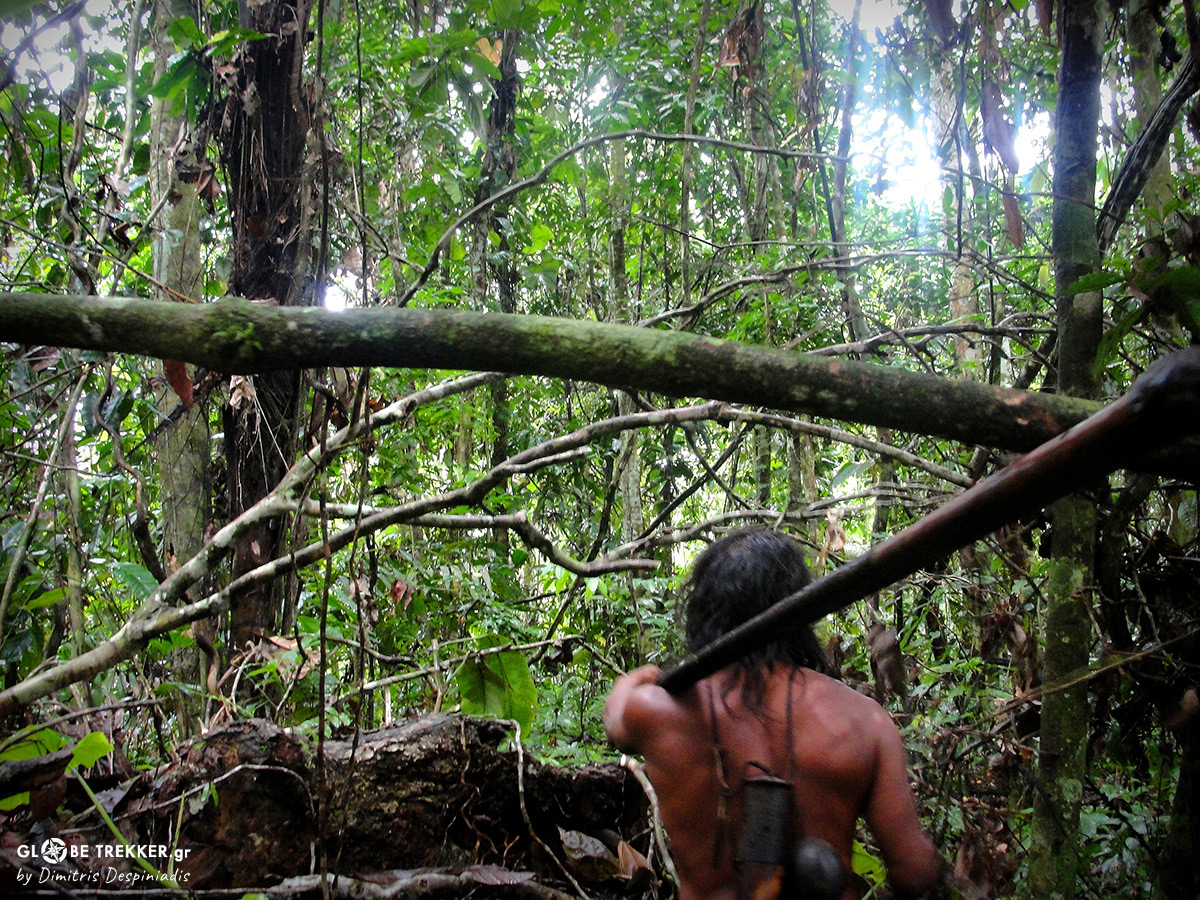
The imposing man with the rough voice, the long black hair and the cut lobs of his ears ( typical of the Huaorani tribe ) was enjoying the respect of his people. That became evident to me days before, from the moment I went to stay with their community of 40-50 souls, that live as semi nomads in the jungles of Oriente ( Equador’s portion of the vast Amazonian rainforest) .
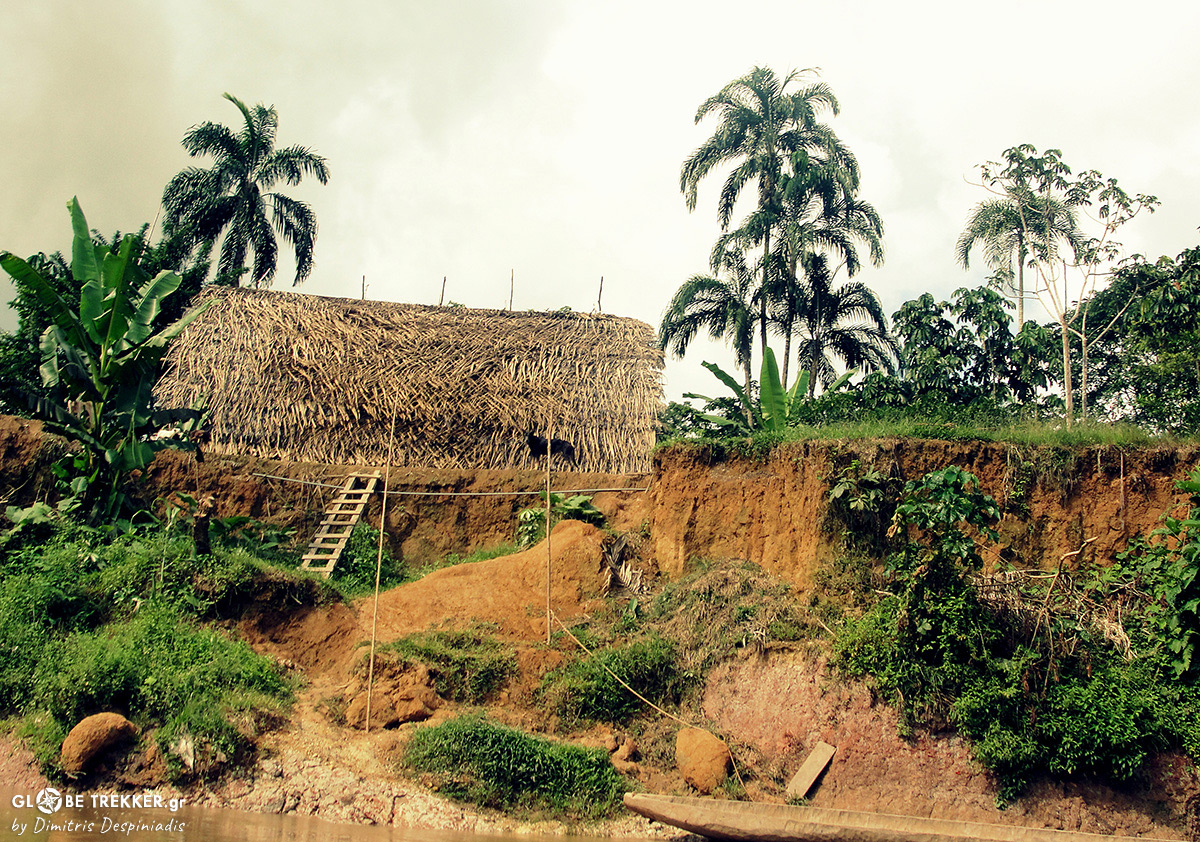
It was March 19, 2010. A month had passed since we started wandering in the altitude ( between Ecuador ‘s volcanoes and Peru’s Cordillera Blanca ) and our bodies could not get accustomed yet to the intense humidity of the tropics.
Our canoe, loaded with provisions to last for a week and 2 small tents , was heading downstream on Shiripuno river, a narrow – and full of branches thus making our progress slow –
tributary of Napo.
Imagine us like a tiny dot, moving on a fine line of a labyrinthine water network, that’s feeding the great Amazon from every direction throughout its 6500 km journey ( from its source in Mismi volcano till its outflow on the Atlantic.

Fernando, a freelance Peruvian guide who was permitted to visit the indigenous Huaorani communities, was handling the canoe.I had found him just a few days earlier in Coca, a strange town without a square ( plaza ) that due to its proximity to the rainforest has attracted anthropologists and other scientists, oil company executives and workers, smugglers and all kinds of weird people.
I had thoroughly read the history of the Huaorani , and the thought that I was about to live with them for a week filled me with excitement !
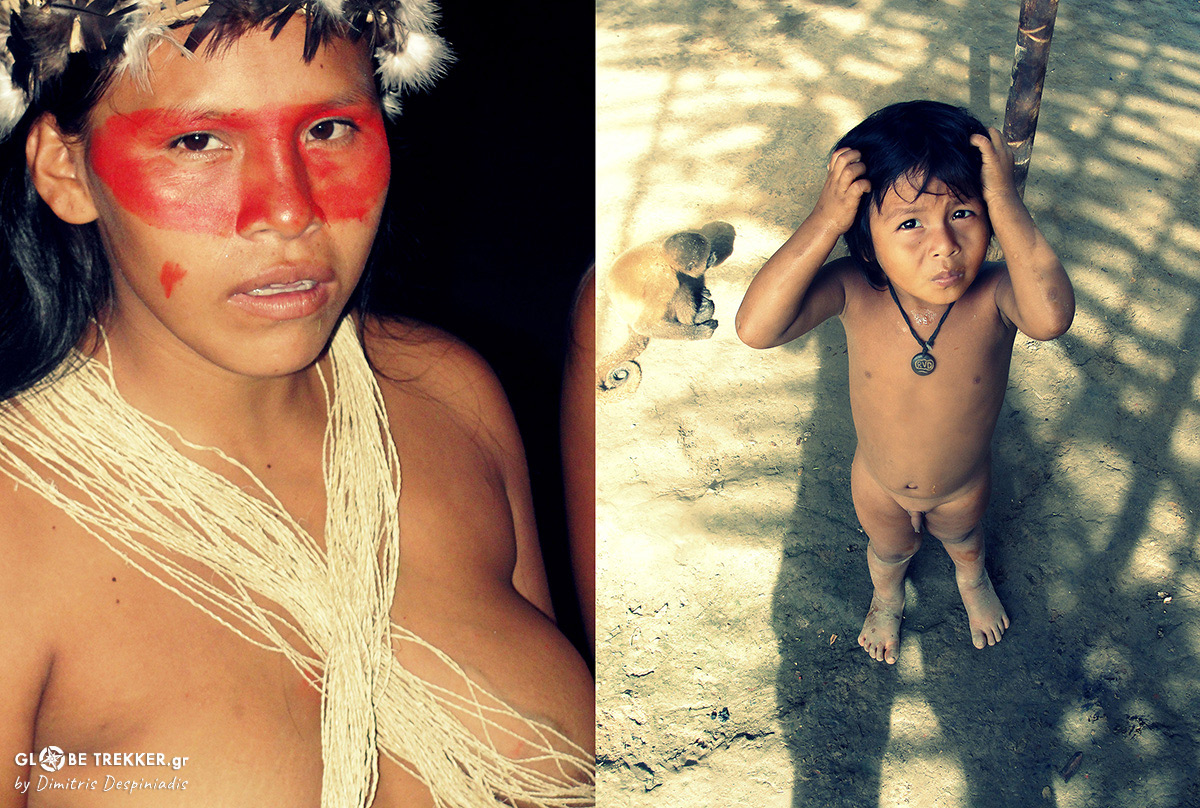
Huaorani had been living in the Ecuadorian jungles for more than a thousand years.Their area extends between Napo and Curaray rivers and, according to their tradition, they migrated by flowing against the current of the river.
Over the years they evolved to experts of the geography and ecology of the forest, living as hunters and gatherers. At the same time, they became reputable warriors, the most powerful among the many ethnic groups of the area.
It was already afternoon when I saw smoke close to us and above the canopy. After a while, the huts of the community – made by interwoven thin tree trunks and palm leaves – could be seen.
A bunch of kids were playing on the riverside until the moment they saw us. There were 7-8 men and women standing on the shore and shooting in their native language ( Wao Tiriro ).
Among them were the one-eyed Gaga and Tiro, the only one who spoke Castellano ( Spanish ). The last helped immensely in our aim to communicate with them.
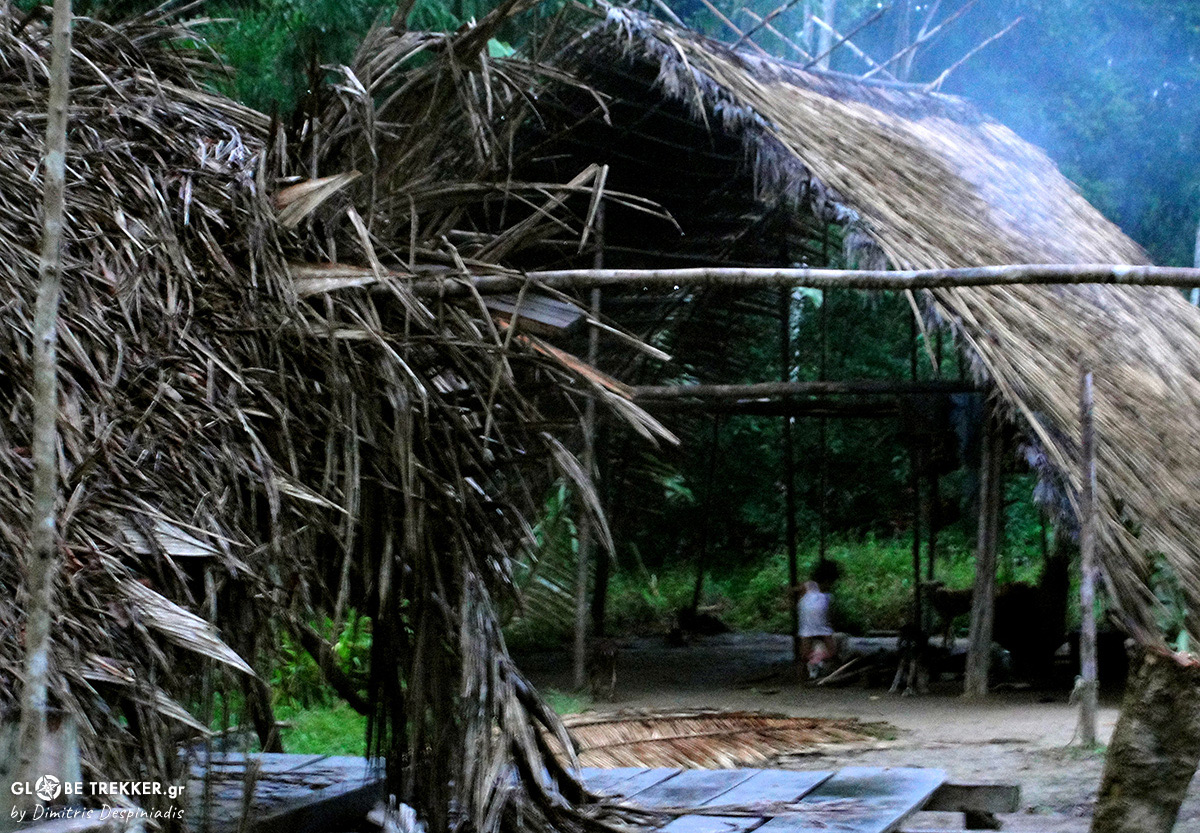
Contrary to what a lot of people would presume, the Huaorani do not have a leader, apart from times of crisis. Polygamy and polyandry exist, depending on the distribution balance between men and women.
Men are involved in hunting, fishing and cultivation of corn, sweet potatoes, yucca, cocoa etc, while women are engaged to the caring of children, cooking and… chicha.
Chicha is a homemade fermented brew they produce by chewing yucca leaves, spitting them in a pot and leaving them there for days. Alcohol is produced by fermentation and the actual result depends on the woman’s taste. It is believed that bad taste is a precursor of bad news. The truth is that the one I tried – under my friend’s discussed expression – was delicious !

The next day Gava went to hunt and we followed him. Every now and then he stopped and imitated the cries of the monkeys ( monos ) in order to attract them. Whenever he spotted one, he was bringing his 3,5 m long Sharabatana to his lips and thrust the sharp – like needles – arrows to it. He succeeded once and immediately murmured something in order to redeem the preys spirit.
According to their animistic worldview, no boundaries exist between natural and spiritual world. In fact, the spirit of their lost brothers are the ones they call during their melancholic festivities.
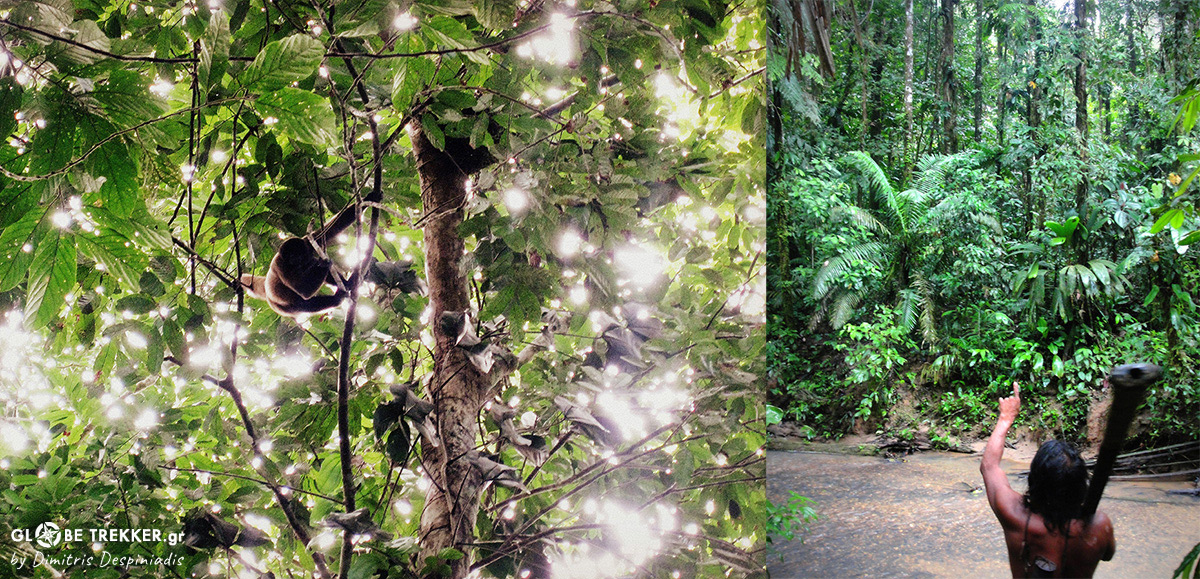
The days passed quickly. We spent most of the time with Gava, who shared with us his knowledge of the forest. We were introduced healing plants, poisonous roots in which they impregnate their arrows, specific trees that their branches can provide you with loads of drinkable water, others they use to make weapons, fruits from which they make paints in order to groom their bodies on special occasions.
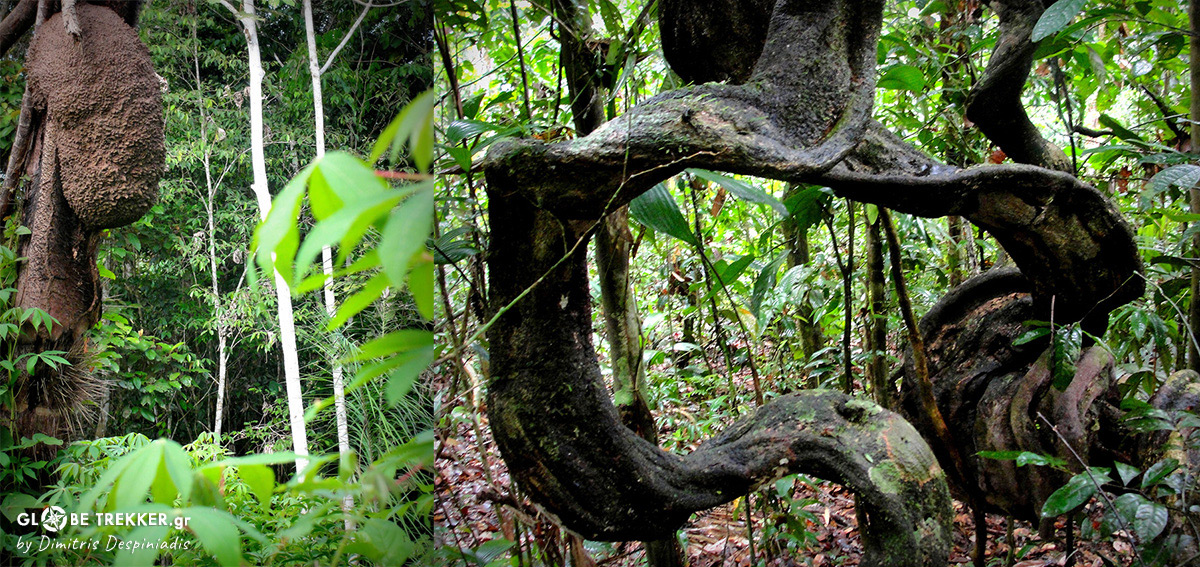
I remember well a specific morning. A thick fog covered everything around us and the only thing visible was our canoe flowing almost silently into the heart of the rainforest. Unknown sounds of creatures we could not see filled the atmosphere, making the scene more intense. Little by little, fog cleared and an amazing world revealed in front of us !
Big Macao parrots in unbelievably bright colors were flying in pairs above our heads, monkeys were playing on the branches of giant trees and a cayman was lying on the riverbank.

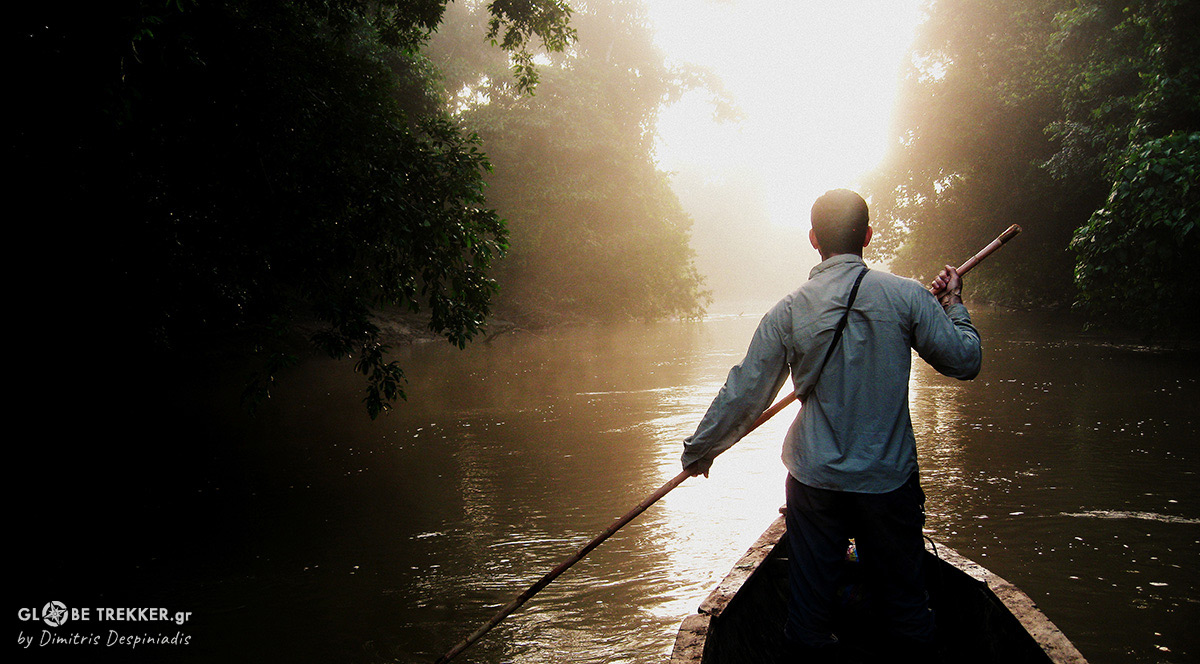
We were within the boundaries of “Parque Nacional Yasuni”, perhaps the area with the greatest biodiversity found on our planet ! Many endangered species – like tapirs, white eagles, pink dolphins etc – find shelter here and many more others have not been recorded yet. Scientists insist that they have only scratched the surface of the existence of life !
This unique and challenging for every living being environment is the one Huaorani call home !
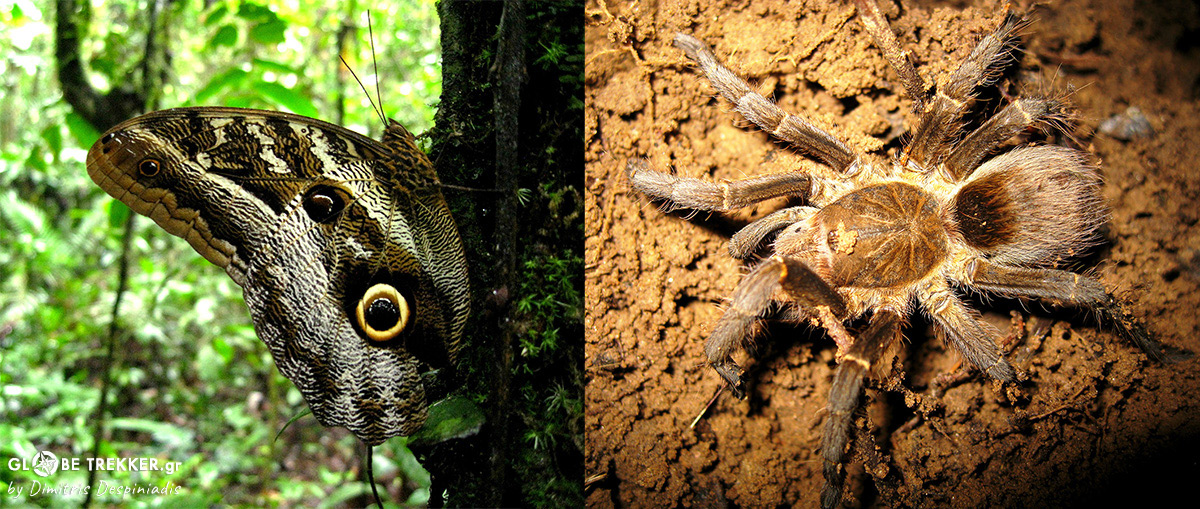
“Our fathers believed that the whole world was a forest ! We know that it’s not exactly like that but … the forest is our home and we’ll defend it at all costs !”
Tiro told me while we were heading towards a giant Ceibo tree that dominated the canopy of the forest, just a few hundred meters away from the riverbank.
“I was not even born yet and Gava was probably a baby when the white men came. It was then that everything started !”
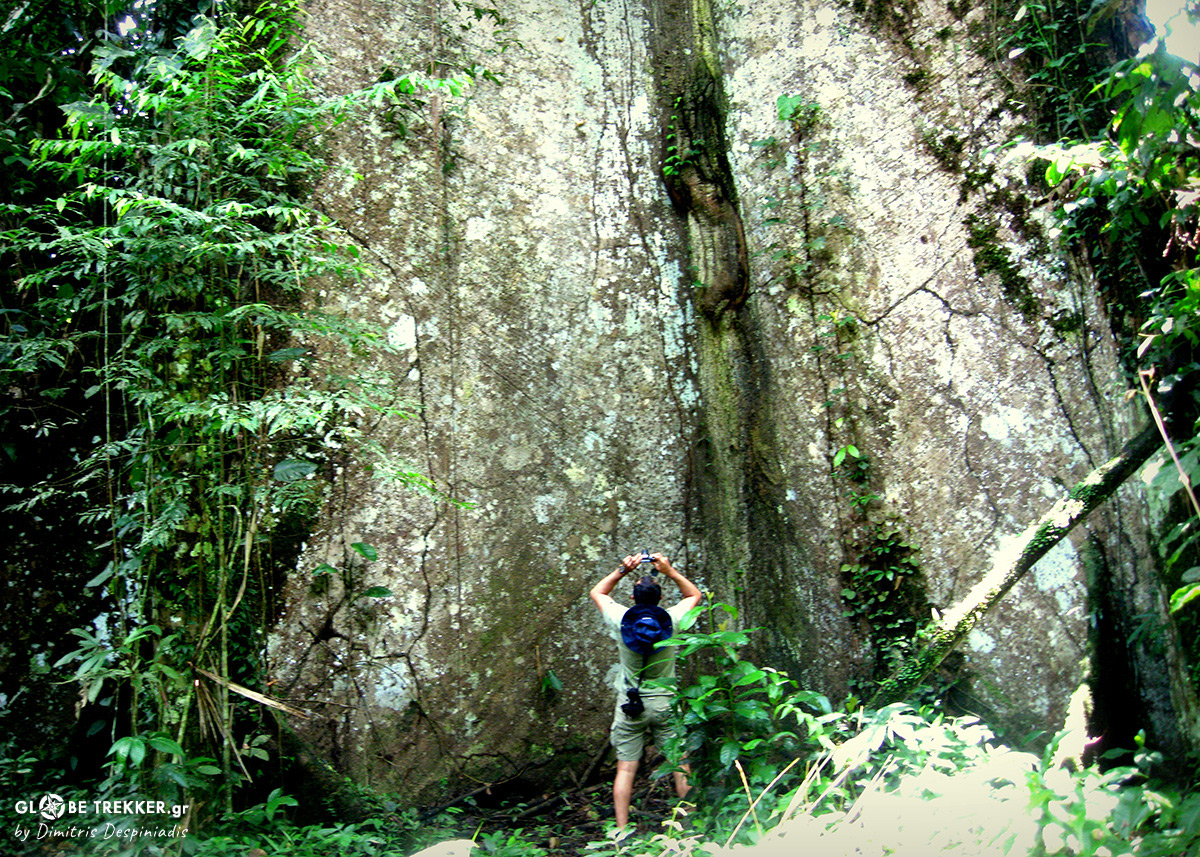
He was right ! The way of life of the Huaorani did not change a lot over the centuries, until a significant oil spill was detected in their area in the 1950’s .
In 1959 the western world discovered their existence when, on a beach of Curaray river , they punched the bodies of 5 missionaries with their 3,5 m lances .They thought that they were invaders. I think they were right !
The following year the sister of one of the victims made the first peaceful contact with the Huaorani and managed to gain their trust. The proven trick succeeded, as in many other corners of the globe.
The natives were fascinated by the gifts and the teachings of the white people. Hundreds of them were convinced to move to the missions, that (accidentally?) had been created a few years earlier, abandoning their ancestral land and thus opening the way to a big-scale oil extraction in the area. Many of these “civilized” now live in Coca, addicted to alcohol and drugs.
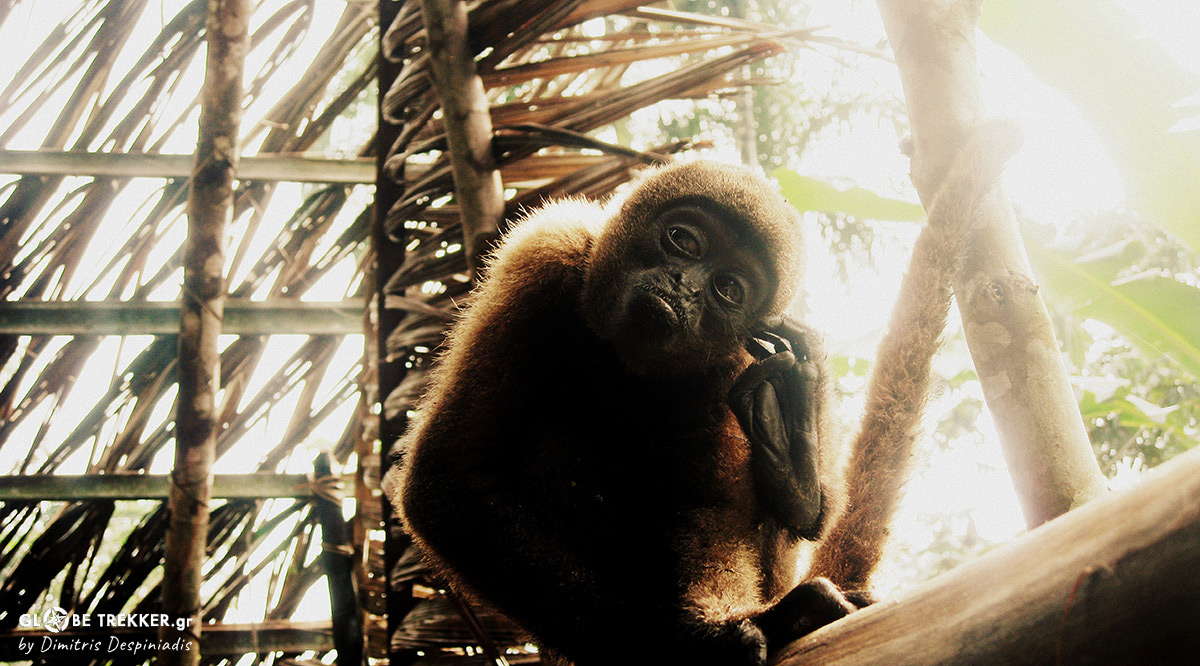
The majority of the remaining population , some 4000 people ( including our guests ) live in small communities in the rainforest in just the 1/3 of their territory and move every 10 years or so. The oil companies and illegal loggers keep putting even more pressure.
The Huaorani have legal rights to the natural resources of their land. In recent years, they are trying – through representatives and NGO’s – to alert the general public about the risk of losing their identity and most of all the loss of Earth’s greatest oxygen reserve, the Amazonian rainforest.
The future of both seems ominous !
What actually are their chances, playing a game whose rules they ignore?
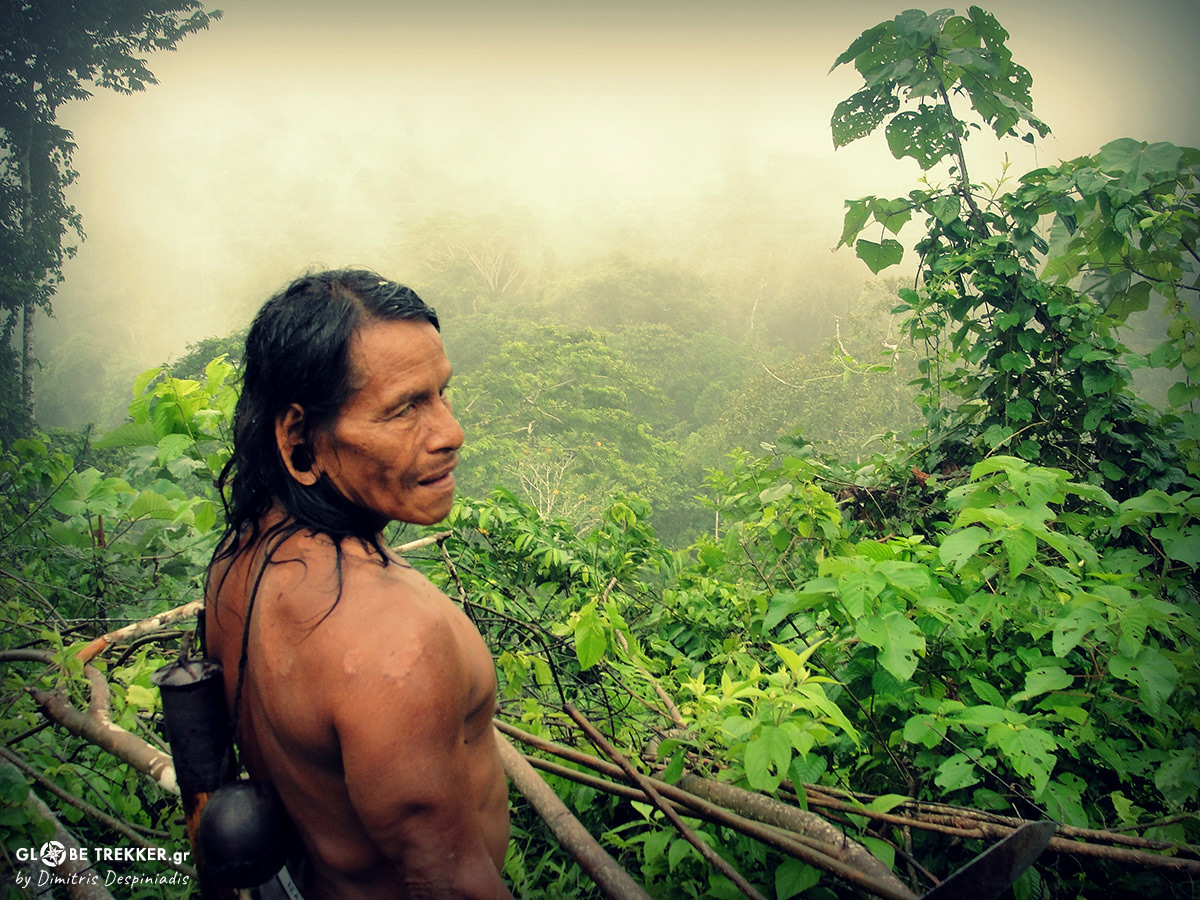
The one-eyed Gava kept cutting the seemingly impenetrable vegetation. We ascended to a clearing on the top of a hill, totally soaked by the intense humidity. From there, as long as an eye could see there was endless jungle. Gava raised his hand, pointing SE ,and whispered:
“Taromenani!”
It might sound UNBELIEVABLE but there, deep in the Ecuadorian jungles two subgroups of the Huaorani ( the Taromenani and Tagaeri ) are still refusing any contact with the outside world ! They are estimated to be 150-200 people these days. Four (4) confirmed cases of “passers-by” who were slaughtered, led the Ecuadorian government to designate the area between Shiripuno and Curaray rivers as a “Red Zone” !
